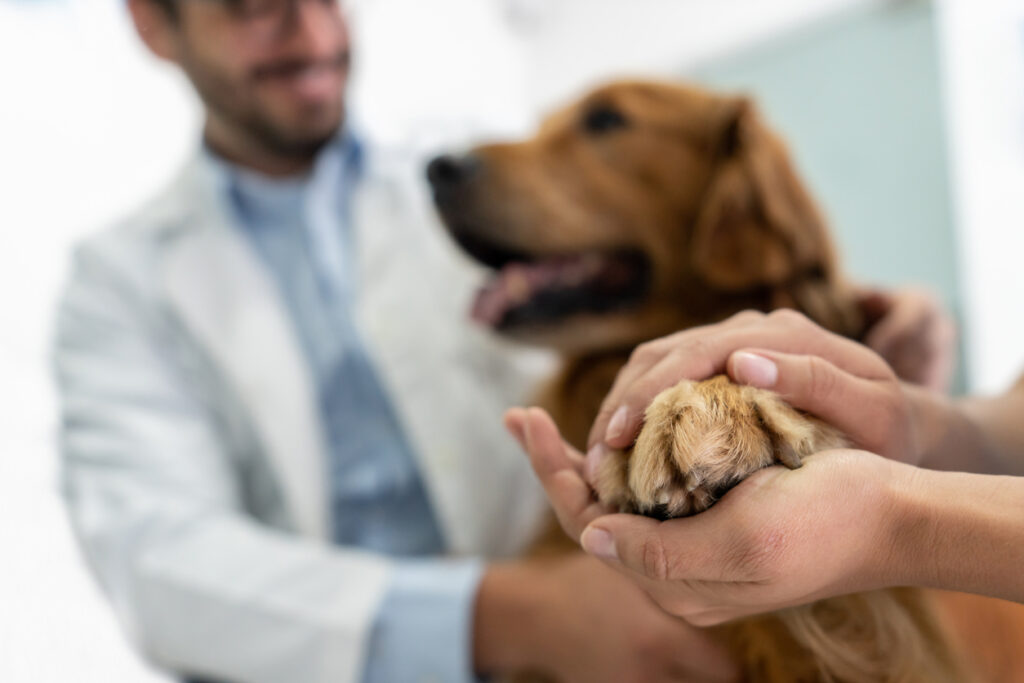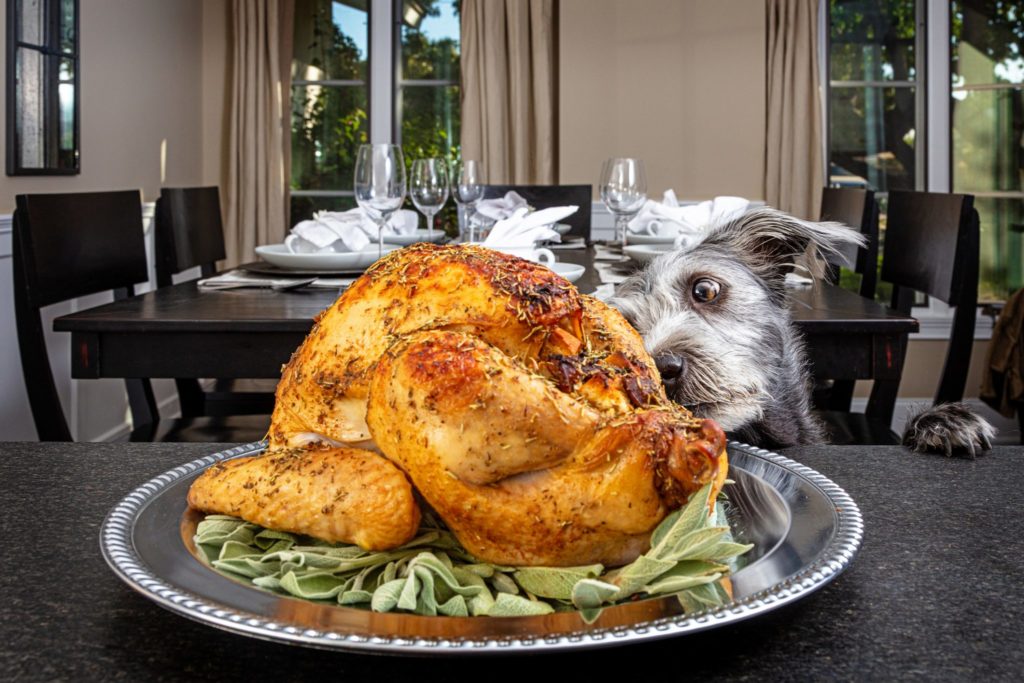10 Reasons Your Dogs Paws are Swollen
As a dog owner, you understand the significance of keeping your furry friend content and healthy. However, swollen paws can be a cause for concern. It’s essential to categorize the underlying reasons behind this condition and take necessary actions. In this article, we will discuss the root causes of swollen dog paws, along with steps you can take to alleviate the discomfort and promote your dog’s well-being.
1. Allergies
Allergies are a prevalent cause of swollen paws in dogs. External factors such as pollen, dust mites, or certain foods can stimulate allergic reactions, resulting in inflamed paw pads. To address this, consult your veterinarian to find the precise allergen and explore treatment alternatives. Your vet may advise antihistamines or, in severe cases, allergy shots to relieve the swelling.
2. Insect Bites and Stings
Insect bites and stings, including those from fleas, ticks, bees, or wasps, can lead to swollen and irritated paws. Applying a cold compress to the afflicted area can be used to decrease swelling and alleviate discomfort. If your dog displays symptoms of an allergic reaction, such as difficulty breathing or excessive swelling, seek immediate veterinary attention.
3. Paw Pad Injuries
Paw pad injuries, such as lacerations, bruises, or burns, can cause swelling and discomfort. Inspect your dog’s paws for any obvious wounds, foreign objects, or traumatizing indications. Consult your veterinarian, who may recommend topical ointments or bandaging to promote healing.
4. Infections
Bacterial or fungal infections can lead to inflamed paws in dogs. Symptoms may include redness, hives, discharge, and an unpleasant smell. If you suspect an infection, seek veterinary aid for diagnosis and proper treatment, which may involve antibiotics or antifungal medication. To prevent infections, regularly wash your dog’s paws with a mild cleanser, dry them completely, and ensure your dog’s living space is clean and free of potential contaminants.
5. Autoimmune Disorders
Certain autoimmune disorders, such as lupus or pemphigus, can cause inflammation and swelling of the paw pads. If your dog’s paws remain consistently swollen and show signs of other autoimmune-related symptoms, consult your veterinarian for proper diagnosis and management. Treatment options may include immunosuppressive medications or other therapies specific to the underlying condition.
6. Arthritis
Arthritis, a degenerative joint disease, can affect dogs of all ages and lead to swollen and painful paws. If your dog exhibits difficulty walking, stiffness, or reluctance to engage in physical activities, arthritis may be the cause. Consult your veterinarian for a thorough examination and a suitable treatment plan, which may include pain medication, joint supplements, physical therapy, or weight management strategies to reduce stress on the joints.
7. Contact Dermatitis
Contact dermatitis occurs when your dog’s paws encounter infuriating materials like chemicals, detergents, or certain plants. Swelling, redness, itching, and blisters may occur. To address this, avoid exposing your dog to known pollutants and consider using protective booties when out on walks. If symptoms persist, consult your veterinarian for appropriate treatment.
8. Overuse injuries
If your dog is very active, it may develop edema in its paws due to excessive usage. Rest and avoiding energetic activity can help alleviate this swelling. It’s also essential to provide your dog with proper footwear, such as booties, if they’ll be walking on rough or hot surfaces.
9. Cancer
In rare cases, swelling in your dog’s paws can be a sign of cancer. Tumors or cancers can develop in your dog’s paws, causing swelling, pain, and other symptoms. If you notice any unusual lumps or growths on your dog’s paws, it’s essential to seek veterinary care immediately.
10. Ticks and other parasites
If you notice your dog has a tick or other parasite on their paw, it’s essential to remove it carefully and seek veterinary care if necessary. Your vet can also recommend preventative measures, such as tick and flea medication.

What to do if your dog’s paws are swollen?
Pay close attention to your dog’s behavior and examine the impacted paws thoroughly. Look for the visible bulge, redness, heat, or any signs of discomfort such as limping, licking, or chewing the paws excessively. Additionally, check for any sores, cuts, or strange objects lodged between the toes.
Clean the Paws
Use warm water and a light dog-friendly soap for scrubbing the paws. This will help remove any dirt or potential irritants. Avoid using strong chemicals or excessive force that could cause further irritation.
Cold Compress
To reduce swelling and provide relief, apply a cold compress to the swollen paws. You can use a clean cloth soaked in cold water or wrap an ice pack in a towel. Apply the compress for a few minutes at a time, allowing breaks in between to avoid overchilling the paws.
Restrict Activity
Limit your dog’s physical activity and avoid walks or playtime on hard surfaces until the swelling subsides. Rest will help prevent further irritation and potential worsening of the condition.
Signs to Look for When Examining Your Dog’s Paws
Below are a few of the most prominent signs of dog paws swelling.
Visible Swelling
Swollen paws will appear larger than usual. The swelling may affect the entire paw or be localized to specific areas such as the toes, paw pads, or between the toes.
Redness and Inflammation
The affected paw may appear reddened and inflamed. This can be a result of increased blood flow and inflammation in response to the underlying cause.
Limping or Lameness
Dogs with swollen paws may exhibit a limp or show signs of lameness. They may favor the unaffected paws and avoid putting weight on the swollen paw due to discomfort or pain.
Excessive Licking or Chewing
Dogs often lick or chew on their enlarged paws to relieve the pain. However, excessive licking or chewing might aggravate the paw and perhaps cause secondary infections.
Discharge or Odor
If there is an infection present, you may notice discharge or an unpleasant aroma stemming from the bloated paw. This can be a sign of bacterial or yeast infection.
Sores or Lesions
In some cases, the swollen paws may develop ulceration, pustules, or open wounds. These can be a result of allergic reactions, injuries, or the dog excessively licking and chewing at the affected area.
How long does it take for paws to heal?
The healing time for swollen dog paws depends on several factors, including the underlying cause of the swelling, the severity of the condition, and the treatment provided. In general, ‘it’s important to note that the healing process can vary and may take anywhere from a few days to several weeks.
For mild cases of swollen paws due to marginal soreness or allergies, the swelling may abate within a few days with appropriate treatment and management. This may entail bathing the paws, using cold compresses, administering prescribed medications, and providing rest for the ’dog’s paws.
However, if the swelling is a result of a more serious condition, such as an infection, injury, or autoimmune disorder, the recovery process may take longer. In these cases, it is crucial to follow the veterinarian’s recommended treatment plan, which may involve oral medications, topical ointments, bandaging, or even surgical intervention if necessary.
Conclusion
Swollen paws in dogs can be indicative of various underlying issues that require proper attention and care. Allergies, infections, injuries, insect bites, and autoimmune disorders are among the common culprits. It is important to closely monitor your ’dog’s paw health, examine for any visible signs of swelling, and seek veterinary advice promptly when needed.
If your dog’s paws are swollen near Fort Worth, TX, bring them to VO Vets Animal Hospital. Our team offers urgent care and allergy testing for pets in the Fort Worth region. Give us a call today at 682.350.8890, or Request an Appointment Online. We can’t wait to meet you!



